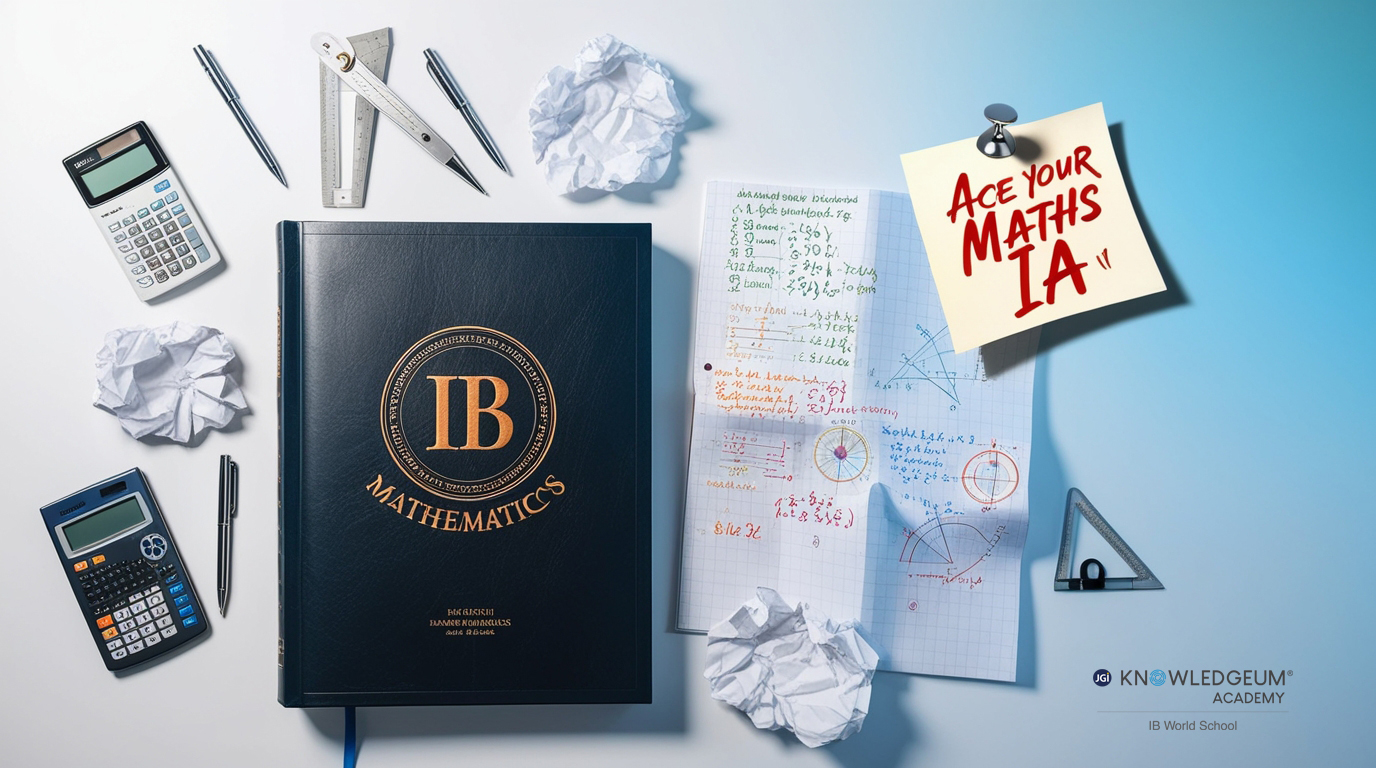IB Mathematics is a dynamic exploration of mathematics that emphasises real-world applications. In the IB Diploma Programme, Mathematics is a compulsory subject, but students can choose between two primary branches: Analysis and Approaches (AA) and Applications and Interpretation (AI). Depending on their interest and aptitude, students can choose either of these branches in Higher Level (HL) or Standard Level (SL). The course enhances the students’ critical thinking and problem-solving skills and nurtures logical reasoning and data analysis skills that are essential in the science, technology and finance fields. Through the Internal and external assessments, the students are expected to demonstrate independent thinking and personal engagement.
The IB Math AA focuses on pure mathematics topics in algebra, calculus, geometry, and trigonometry. Math AI focuses on applying mathematics to real-world contexts and includes topics in statistics, probability, and modelling. Math AA is generally opted for by students who wish to pursue engineering, architecture, pure mathematics or similar college programmes. Math AI is a better fit for students looking at college programmes in finance, business studies, data analytics and similar fields. Attempting the IA requires a strong grasp of mathematical concepts and careful planning and structure.
In the IB Maths IA, students investigate an area of mathematics and present a written paper. With the IA, they delve deep into a mathematical concept of their choice and demonstrate their understanding and application using various techniques. The IA scores are worth 20% of the total scores for that subject and its successful completion is important to earn the IB diploma. A strong maths IA structure will include an introduction, conceptual clarity, exploration and conclusion. Students can choose the topic and the problem. Let us explore the IA structure -
You will introduce the topic with a clear statement of aim and objectives. The problem statement should engage the reader with its unique approach and solve a real-life problem. For instance, you can apply calculus and derivatives to study the movement of an individual stock. You can study mathematical models such as the Fibonacci Series to analyse data structure or in problems with recurring patterns such as software development. Through your work, you must solve complex problems bringing out the topic’s relevance.
The background must describe the concepts and techniques that you will apply in your IA paper. Your understanding of mathematical theory must come from the apt use of equations and formulas. A good background will have -
Specific information on the mathematical concept
Provide context and motivation behind the paper and understanding of the subject
Clear and concise language
References and additional resources with proper citations
This will form the main body of the IA where you demonstrate your ability to use mathematical tools to solve the problem. Here, the author will explain the methodology they will use and provide clear evidence in the form of calculations and reasoning. The work must be presented, and you must add graphs and diagrams to substantiate your argument.
The conclusion will summarise the findings and explain how they relate to the original aim and objective of the IA. you can present the strengths and limitations of your investigation and suggest potential areas for further research. The conclusion must reflect your learning, and original ideas behind arriving at the conclusion.
The IBDP IA papers have the same structure as the academic papers written in college. Thus, you must follow the referencing principles for academic writing. The sources must all be approved for academic reading. These include textbooks from known publications, websites, and articles from academic papers, journals, newspapers and magazines. The citations must be added appropriately and the last page must have the complete reference list.
Pick a topic that you are interested in and revolves around a mathematical concept that you understand and see the potential for exploring.
Refer to multiple varieties of sources that will help you get a clear understanding of the topic and also demonstrate your research skills.
Show your work by elaborating on how you arrived at the conclusion. Show the complete solution of the equations and the resources used for them.
Try to use real-world examples to strengthen your argument and show your application.
Ask for feedback from your academic guide.
Every aspect of your project must reflect your dedication and focus towards the subject. If you can show some international relevance of the problem, it can be a bonus towards strengthening your IA.
© Knowledgeum Academy
